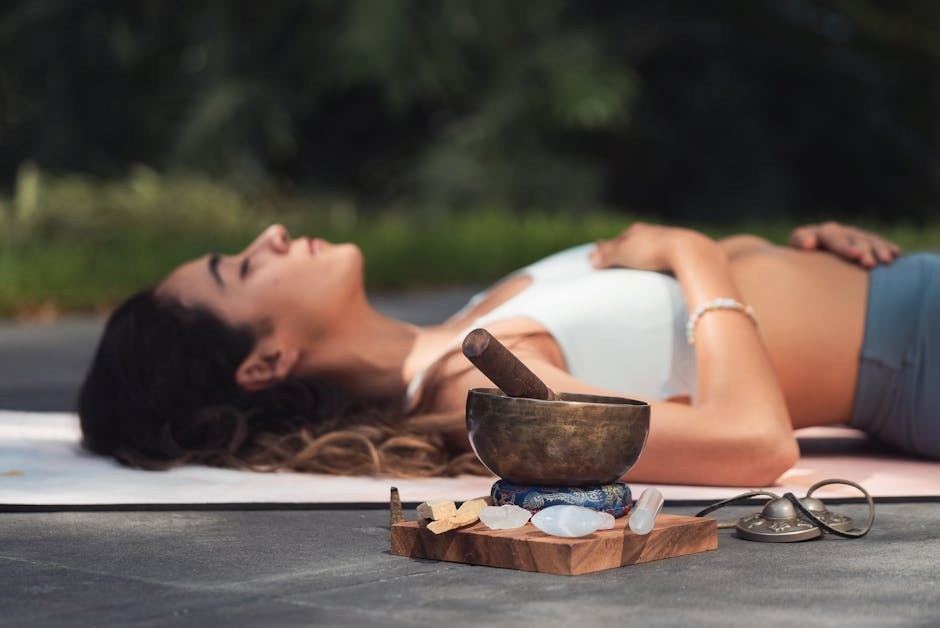Look closely at any long-term pair and you’ll notice a soft kind of mirroring-habits matching up, phrases echoing, tastes drifting toward the same shore. This doesn’t mean identity disappears. If anything, the daily dance deepens who you are by adding a second rhythm alongside your own. Couples in love tend to discover that closeness invites harmless imitation, and imitation-when freely chosen-becomes its own affectionate language. A shared cadence shows up in how you talk, what you wear, what you laugh at, and even the little rituals that make a home feel like a world you built together.
There’s a practical reason for this convergence: life is smoother when routines fit and values overlap. Another reason is delight-when you adore someone, you naturally want to try their favorites, understand their perspective, and be part of what lights them up. Couples in love don’t merge into a single person; they create a partnership in which two distinct selves keep trading ideas, gestures, and preferences until something harmonious forms between them. Think of it as tuning instruments before a performance-each keeps its timbre, yet the duet sounds better when both are in tune.
Why closeness invites a gentle echo
Familiarity breeds comfort, and comfort breeds mimicry-especially the harmless kind that signals trust. Spending hours together means absorbing the same jokes, noticing the same details, and building the same shorthand for everyday life. Couples in love accumulate inside references and shared context; from there, aligning on little things happens almost by accident. What looks uncanny from the outside often feels natural on the inside, like discovering a shortcut in a city you both know by heart.

-
Voices that begin to rhyme
Language is contagious. After enough conversations, your partner’s favorite turns of phrase slip into your sentences, and yours find a home in theirs. Maybe you adopt a regional expression you never used before, or they pick up your way of ending a thought with a playful quip. None of this requires effort-exposure alone does the work. The secret is that speech isn’t just words; it carries timing, rhythm, and comedic pause. Couples in love start to share that rhythm, finishing one another’s sentences not because they’re psychic but because they’ve learned each other’s cues.
Over time, your couple dialect becomes a cozy shelter. You both know what “we could do the thing” really means, and a single raised eyebrow says more than a paragraph. For couples in love, this gentle convergence doesn’t erase individuality. It simply makes daily communication more fluid-an inside channel that reduces friction and adds warmth. The effect is especially visible when you’re around friends; someone points out that you sound alike, and only then do you realize how far your voices have rhymed.
-
Style that drifts toward harmony
Wardrobes evolve in relationships, sometimes subtly-sometimes all at once. Compliments act like tiny votes; you wear what earns a grin, and you retire what never gets a second glance. Meanwhile, you browse together, borrow a jacket here or a sweater there, and suddenly your weekend outfits look like they belong in the same photograph. Couples in love often find a middle path between aesthetics, whether that means cleaner lines, cozier textures, or simply dressing for the same kinds of dates and adventures.

This isn’t about uniformity. It’s about resonance-your look and your partner’s look begin to converse. You may lean into colors that flatter you both, or you coordinate by accident because your mornings follow the same mood. Couples in love also influence grooming habits and accessories: a hat you once thought was “too much” becomes your signature, and a pair of boots you’d never considered turns into a staple because your partner swears they suit you. The end result is a shared visual story that still contains two unmistakable characters.
-
Leisure tastes that line up
Free time is where preferences meet. You start out with separate playlists and watchlists, then gradually trade recommendations until you’ve built a shared library. Maybe they introduce you to slow-burn documentaries, and you return the favor with comfort comedies. Sooner or later you’re rating films with the same criteria, quoting the same scenes, and planning nights around releases you’re both excited for. Couples in love discover that curiosity is contagious-when the person you adore is raving about an album, you listen differently, and the doorway to a new genre opens.
The reverse happens too: you let go of time sinks that only one of you enjoys. Not because you’re pressured, but because a joint habit beats a solo one when the goal is connection. Couples in love gradually assemble a set of go-to activities-morning walks, puzzle nights, pick-up games, page-turners in a cozy corner-that make downtime feel like a secret tradition. The more you practice those traditions, the more aligned your taste becomes, until choosing what to do next feels effortless.

-
Borrowed gestures and shared mannerisms
Watch your hands while you talk-you may catch your partner’s gestures sneaking into your own. A tilted head, a particular shrug, the way you rest your chin while listening-small movements migrate across the relationship. Facial expressions do it too: their smirk becomes your smirk; your thoughtful pause becomes theirs. Couples in love don’t choreograph this; the brain simply mirrors what it sees often, especially when affection lowers self-consciousness and invites play.
These micro-signals become part of your couple identity. Friends joke that you’ve started to “make the same face,” and you laugh because it’s true. For couples in love, mannerisms serve as nonverbal shorthand-an affectionate tap on the shoulder, a shared look in a crowded room, a wave that means “let’s head out.” The magic lies in how these cues compress meaning. A tiny gesture can carry a paragraph’s worth of intent, and the efficiency feels like intimacy-because it is.
-
Outlooks that meet in the middle
Beliefs don’t shift overnight, but proximity nudges perspective. When you debate dinner-table topics long enough, you start to understand not just what your partner thinks but how they arrived there. That method-values, priorities, evidence-begins to influence you, even when you disagree. Couples in love often move from rigid stances to more nuanced maps of the world. You still have your own compass, yet you adjust the route because your partner notices landmarks you missed.
Sometimes a single issue becomes the gateway; you explore one viewpoint together and then realize your frameworks have grown more compatible across the board. For couples in love, this isn’t surrender-it’s synthesis. You keep each other honest, update opinions with new information, and create a joint philosophy for your shared life. The result is not perfect agreement but a pattern of generous interpretation, where you try to see things as your partner sees them before deciding what you believe.
-
Palates that begin to agree
Food is memory, and memory thrives on company. You venture beyond your comfort zone because someone you trust says, “Just try a bite.” One day you’re rediscovering a humble soup in a new seasoning; another day you’re savoring a pastry you once walked past without a second thought. Gradually the menu you share expands, and favorite spots earn nicknames that only the two of you understand. Couples in love often end up craving the same things after a long day-not out of obligation, but because your bodies learned to expect the same comforts together.
It works the other way as well: you begin to cook with each other’s preferences in mind. Spice levels shift, pantry staples multiply, and you both know exactly which dessert counts as “a treat.” Couples in love build ritual around meals-market strolls on lazy weekends, a home recipe that marks a new season, a standing date at the table by the window. Those rituals turn taste into story, and the story becomes one more thread pulling you toward the same table.
-
Plans that point the same way
Shared goals aren’t just big leaps like moving or buying something together; they’re also the ordinary steps that keep life on track. You plan budgets that respect both temperaments-one of you cautious, the other optimistic-until the numbers reflect a common horizon. You divide chores not by rigid fairness but by strengths and energy levels, because teamwork beats tally-keeping when the mission is a peaceful home. Couples in love learn to talk about timelines, not ultimatums, and to revisit plans when circumstances change.
Even dreams that remain individual-career pivots, creative pursuits, study goals-get woven into a joint calendar with shared milestones. Couples in love turn “my project” and “your project” into “our support system,” trading encouragement and practical help. You become co-authors of the life you’re building, and each decision asks the same gently guiding question: will this bring us closer to the life we both imagine?
-
Laughter tuned to the same frequency
Nothing reveals shared taste faster than humor. At first you might chuckle politely at what your partner finds hilarious; later you’re the one sending similar clips because the joke now lives inside your head, too. Couples in love collect stories that grow funnier with every retelling-travel mishaps, kitchen experiments, pet antics-and those stories become the backbone of private comedy. A look across the room can trigger giggles because both of you are replaying the exact same scene.
Humor also softens hard moments. When tempers flare, a well-timed quip can dissolve tension without dismissing the issue. Couples in love learn each other’s boundaries-where playful ends and unkind begins-and use laughter to keep conflict humane. Over time, you share not just a sense of what’s funny, but a sense of how to return to each other after disagreement. That is the higher register of humor: not punchlines, but repair.
How to mirror without disappearing
Imitation can feel like intimacy, but the healthiest version preserves your edges. Keep a few solo rituals that belong solely to you-an early run, a hobby that refuels you, a friendship that existed before the two of you-and protect them with the same respect you grant date night. Couples in love thrive when togetherness doesn’t erase uniqueness. Think in terms of exchange rather than absorption: I’ll try your favorites, you’ll try mine, and whichever ones fit our life will stay.
Communication makes the difference. Speak up when a change feels performative rather than joyful, and listen when your partner says, “I miss the way you did that.” Couples in love can hold both truths at once-that blending is beautiful, and that boundaries are beautiful, too. Recalibrate as seasons shift; what served you last year may need fresh rules this year. The aim isn’t to become indistinguishable, but to build a shared rhythm that lets both of you shine-sometimes in unison, sometimes in counterpoint, always in step with the life you’re composing together.